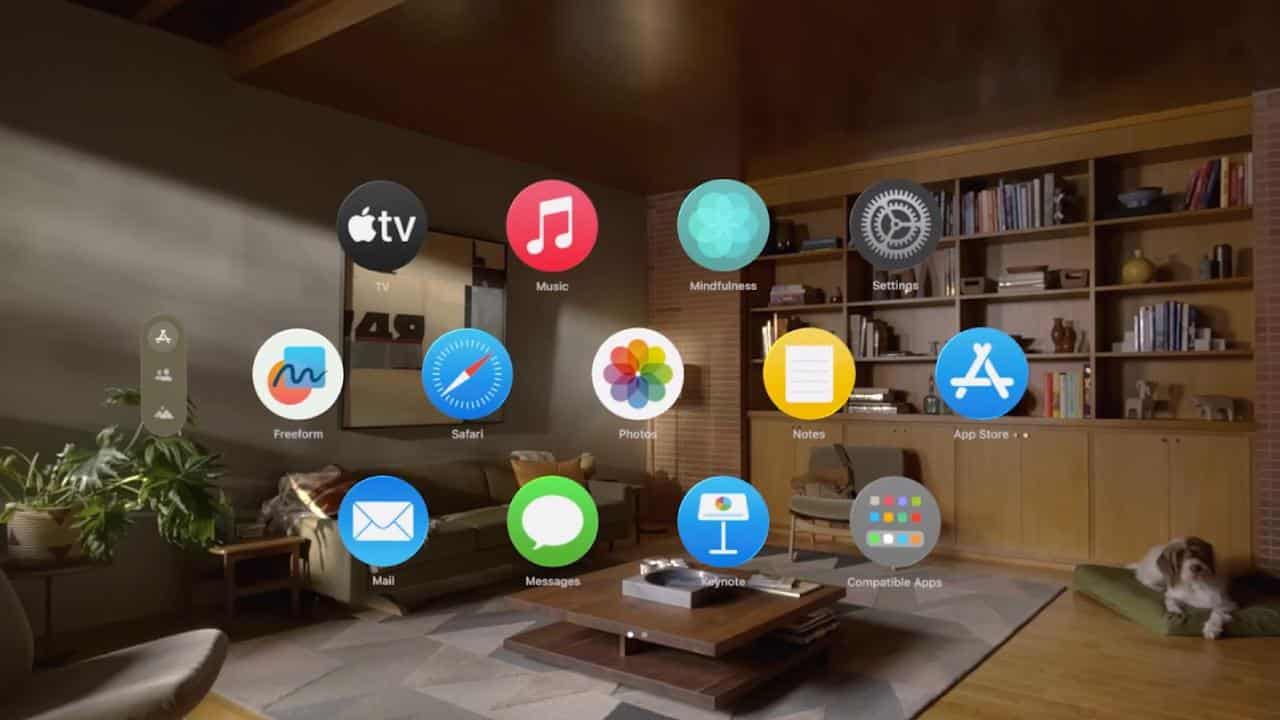Video Gamer is reader-supported. When you buy through links on our site, we may earn an affiliate commission. Prices subject to change. Learn more
Apple is finally entering VR, as announced at this year’s WWDC. The Vision Pro will launch next year, priced at a staggering $3,499. We saw the headset’s potential for an “infinite canvas for apps” that are “controlled by the most natural and intuitive inputs possible – a user’s eyes, hands, and voice.” However, this only emphasises the crucial element missing from the headset, and it’s destined to flop as a result of its omission.

Defined as the company’s “first spatial computer”, the Apple Vision Pro Press Release refuses to acknowledge the terms Virtual or Augmented Reality, despite it irrefutably being a VR / AR headset. Loaded with the visionOS, which is also the “world’s first spatial operating system”, the Vision Pro effectively becomes an iPad screen overlaid on passthrough video. Not sure about you, but I don’t need to see my emails covering my dog’s face.
The problem is that Apple has gone all in on immersing you into a digitalised workspace, clearly targeting the professional world. But this is VR, so where’s the escapism?
To set the record straight, the Apple Vision Pro features cinematic experiences, ‘Immersive Environments’ where you can turn your room into a natural vista, and an AI-powered FaceTime mode to help us chat to our grandparents. 3D movies and 180-degree video are impressive, but the others are less so. Video calls while wearing the headset have an AI-rendered digital avatar taking your place, which admittedly is pretty cool, albeit pointless. while the environmental backgrounds are just a gimmick.
Immersive gaming experiences clearly aren’t a priority for this VR headset, which costs an arm and a leg, but the catalogue of Apple Arcade games is not enough to warrant this a worthwhile purchase at all. Don’t worry though, for only $3,499 you can look through your camera album in virtual reality.
One Redditor encapsulated this gripe with the headset in their thoughts on the headset, explaining that “VR is about going places that don’t exist, sell me an adventure, make me be a warrior or hero or Jedi master who slices blocks. I hate that they chose to make this a nostalgia machine or glorified TV.”
Despite its technological advancements, the Vision Pro has forgotten the origin of virtual reality. Perhaps this is a symptom of Apple’s rejection of the term in favour of “spatial computing”, a clear shift catering to the demands of the Metaverse.
The incessant need for the tech giants to digitise our homes and workflow is already turning off consumers. We saw it with the Meta Quest Pro, which was aimed at professionals rather than those who play games. It didn’t really take off. Allegedly, despite selling 20m Quest headsets (across all Meta Quest products), newer customers are “just not as into it.” The Vision Pro will suffer the same fate. What fraction of consumers out there are going to wake up every morning and put on their Vision Pro to FaceTime their significant other, or don the headset to reply to an email from their employer?
However, there are plenty of people who would embrace a new state-of-the-art VR headset, and that’s anyone who plays games (and has $3.5k lying around). The PSVR 2 released with raving reviews and while sales may have eventually slowed down, there’s no denying how well it was received by consumers.
When someone puts on a VR headset, they want to disconnect from the always-connected world we live in. Stick the headset on for an hour or two and escape to hundreds of different worlds, where those work emails when you’re not on the clock won’t bother you and the Instagram likes on your latest selfie will pile up in the background. VR is the perfect tool to properly disconnect from online obligations, and Apple has completely missed the mark with the Vision Pro.
Apple may have felt the pressure from Meta to be the first-mover in the Metaverse, hence why they released an outrageously expensive headset with use-cases that nobody is really asking for. If instead, they understood what consumers actually wanted from a VR headset, they might have actually developed a product we wanted.

The reality is that everyone expected Apple’s entry to VR technology to be ground-breaking and smash the Metaverse. Honestly – the tech in the Vision Pro could be just that. But, there’s one glaring thing missing from this headset, and that’s a purpose. Apple, if you’re reading this, listen to us. Sell us an adventure, not a scuba diving mask that can browse the web.
